| Lockwood
Custom Optics at the Total Eclipse of the Sun 2024 and Group Star Party Visual and nightvision observing at a superb site by night, relaxing and an eclipse by day, and other extracurricular activities! All images and text Copyright Mike Lockwood, 2024. May not be used without permission. |
Playing the
numbers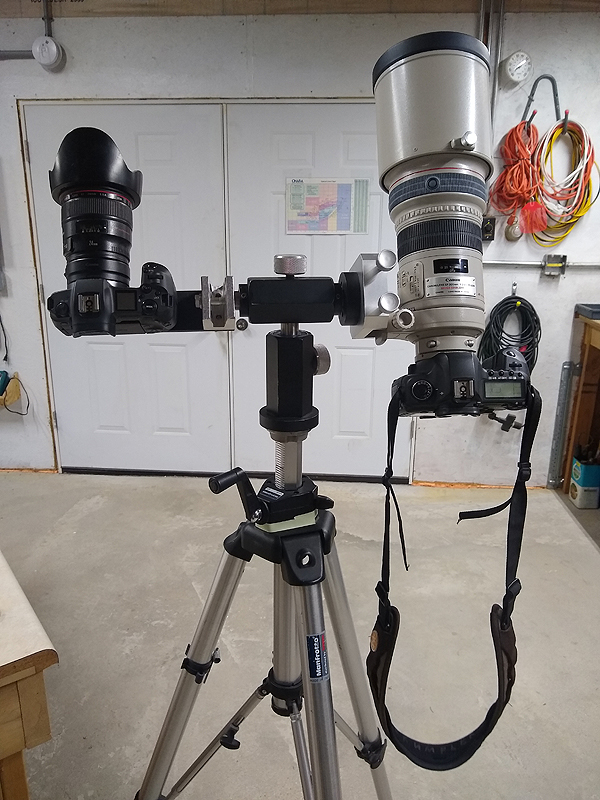 STATISTICALLY, in April, southwest Texas has the clearest skies in the US in the path of the 2024 eclipse. So, when a few clients and some of their friends started talking about doing a small private gathering in Texas for the eclipse, in the middle of what would hopefully be seven or eight good nights of observing, I told them I wanted to attend. I'm an engineer, after all, and I decided to play the numbers. My parents' house is near the border of Indiana and Ohio, and their backyard would have about two minutes of totality, but I didn't want to play the poor odds on clear skies in that region in April. After a mostly cloudy Okie-Tex 2023, I longed for some summer Milky Way action under dark, transparent skies. This plan filled the bill. After some time, the group chose a site, which I won't name here, and deposits were paid. The site was a ranch with a good observing area, providing housing, food, and a few other activities. It was not inexpensive, but we thought it would be worth it. I made my plans quite some time ago, and my girlfriend, Kara, made other plans involving the picking up of a telescope she had purchased, seeing family, and going to a site in Arkansas for the eclipse with her family. I felt a bit guilty about this and not being with her or my own parents for the event, but I had already committed well before that. It would be an opportunity for observing time and to see some new places and meet some new people that all had the same passion for astronomy. Ed and Elvira would be attending, along with two other clients from Oregon and Florida. Much of the group was coming from the northwest United States, and everyone had a large telescope with them. My 12.5" f/2 NVT was a dwarf by comparison, but it packed a punch with good filters, a wide field and a superb nightvision unit under dark skies. My eclipse photo rig was put together a bit before the trip - see photo at right. Previously I had used a tripod and an arm to support the camera, but it liked to oscillate a bit. I hoped this setup was a bit less "bouncy", and it seemed to be, and as a bonus I could mount two cameras, one with a telephoto and the other with a wider angle lens. I started driving on Tuesday morning, April 2nd, a day earlier than I had originally planned to get a bonus night of rest, relaxation, and observing. Luckily traffic was not bad through St. Louis, and I stopped at a rest area in central MO for a break and a quick lunch of leftovers that needed to be eaten since I was going to be gone for a week and a half. As I got back to my car, I was forced to leave quickly so I wouldn't get high from the second hand pot smoke being blown directly into my car from the car that was upwind of me. I just didn't need to have to deal with smelling like pot if I ended up somehow getting stopped in Oklahoma for some minor traffic offense, because they have a markedly more negative opinion toward it than Illinois or Missouri does. (Personally I stick to beer and bourbon.) Therefore, I pressed onward quickly. With the usual other I-44 annoyances - trucks taking five to ten miles to pass each other in the hills while traffic backs up behind them, construction, oblivious idiots on the phone in the left lane - behind me, I emerged into Oklahoma. To those driving through and not stopping, Oklahoma appears to be constituted of two main things - casinos and toll roads that take you right to those casinos at high speed. The toll roads were fast and mostly construction free, so I made good time toward Oklahoma City. Now if you spend time in Oklahoma, you will find great people and other great things about the state, including the Okie-Tex Star Party in the extreme northwest tip of the panhandle, which does not feel like Oklahoma to me, but it is. I met up with Rex at James E. McNellie's in downtown OKC. He recommended it because it had a superb and huge beer list and some good food. Rex is a regular Okie-Tex attendee, and we both enjoy good beer and bourbon, and as I have learned over the years, many astronomers do. It was good to catch up between star parties and have a good beer on draught. I then continued on to Lawton, OK, for the night at a sprawling and mostly empty hotel. The second day's drive southwest into sparsely populated Texas was enjoyable, with little traffic, on a beautiful sunny day with blue skies. I passed through Wichita Falls, then the towns shrunk dramatically and the landscape varied from hilly scrub to flat nothingness, and then eventually to rolling hills and mesas covered in things with spikes on them and a few cattle. After a brief stretch in I-10 through this country, it was another hour to my destination, with the last twenty minutes consisting of a VERY long, one-lane gravel road that had been recently cleared after floods in various canyons and washes had obliterated it. As I turned off the main road, I did not expect to soon be driving through a dry river with two feet of rocks, branches, and other stuff piled up along the sides. It was strangely familiar, and was a bit like driving up a Michigan driveway with snowbanks on either side, I realized.  After more twists and turns, good stretches and washboard stretches, I thought I might have missed a turn, but eventually I pulled into a civilized looking area with a large grassy area and groups of buildings. I parked by the building, avoiding some large rocks. I figured out I was in the right place when I walked around the building and found the telescope field fully filled with instruments, with little room for even my compact 12.5" NVT. How inconsiderate! For more on my 12.5" f/2 NightVision Telescope (NVT), see my Okie-Tex 2023 and Winter Star Party 2024 articles. After saying hello to everyone that was awake, I shoe-horned my telescope in at the end, as you can see in the photo above, and then later in the week I moved closer to the middle. Other instruments were a 20" f/5, 20" f/3.0 with my optics, a 22" f/4, a 22" f/3.3, and two 24" f/2.75 telescopes - Elvira and another scope, both with my optics. This was a nice collection of some significant aperture, and it was good to see. Here is another view of the telescope field. 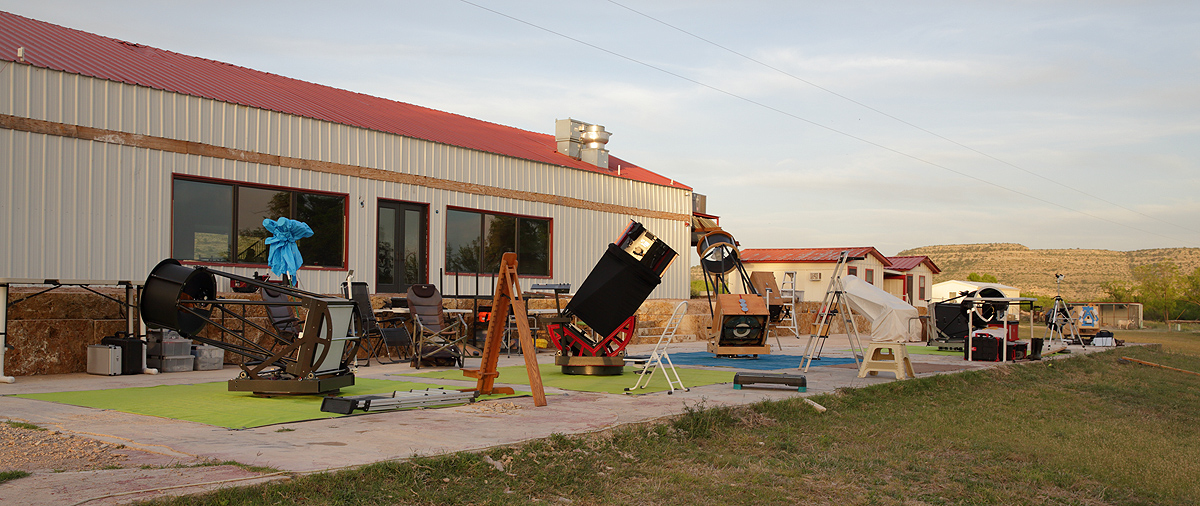 After setup, it was time for a great dinner and getting to know the cook and how things worked there. Coffee was available all night, and the observing area was just outside the large dining room with large tables that made taking a break inside very convenient. We managed to keep the lighting to an absolute minimum inside, so the setup worked very, very well. I settled into my room with its own small bathroom and shower, which was located above the kitchen, just up the stairs from the dining hall. I got the 12.5" NVT all set up and collimated, and waited for darkness, which came with definitiveness. The stars at night are big and bright..... deep in the heart of Texas! That title should make you think of a song, and that song is quite correct. The skies were excellent, suffering from only a little bit of natural red or green skyglow in the south, and perhaps a tiny bit of brightening to the northeast where the Permean Basin oil development has occurred. Neither really affected the observing at all. I was measuring 21.6 to 21.7 on the sky quality meter on this night, which is really good during this period of increased solar activity and resulting increased skyglow. Successive nights were almost as good, but not quite, due to dust and haze, though conditions did change over the course of the night. The observing was excellent. As I write this several months later, the various nights run together, but photos that I took remind me of what I did on those nights. Here's a photo from late on the first night, showing the excellent sky and our telescopes illuminated with red light. 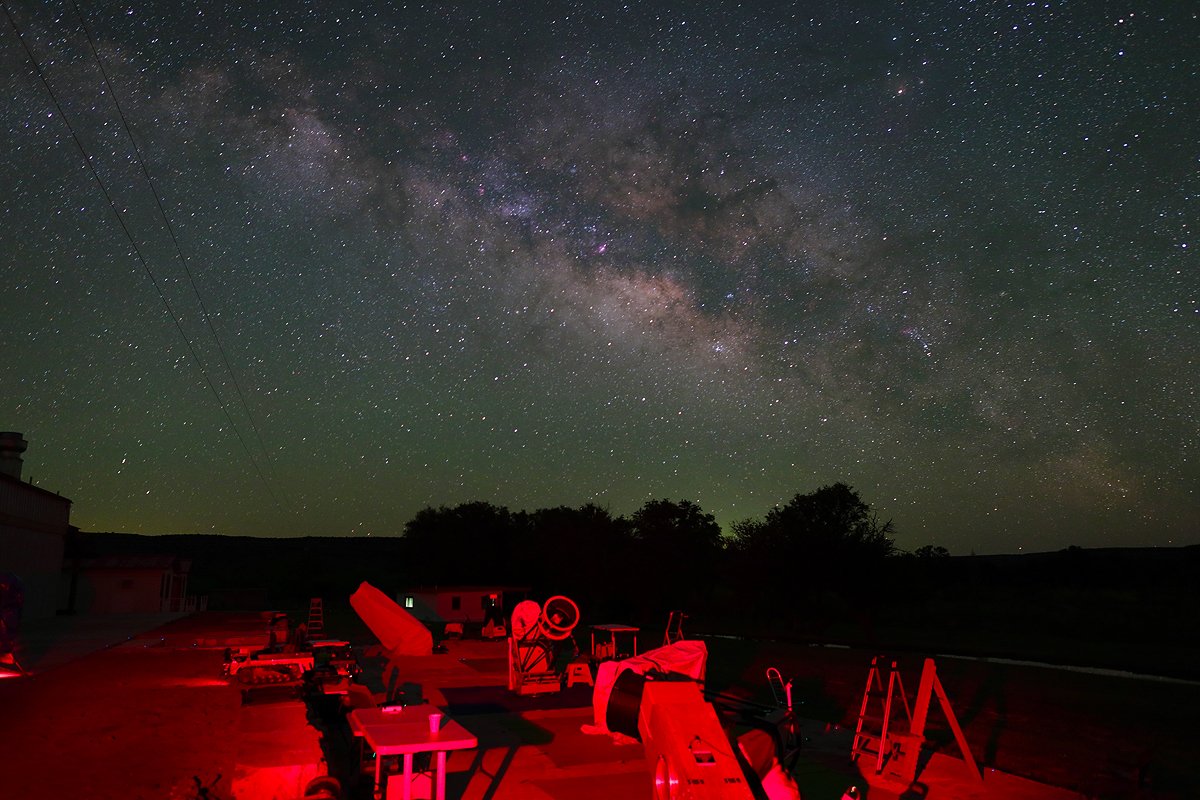 My first night, April 3rd, was an observing fest under good skies. The rest of the group had changed their schedule to arrive two nights earlier, and I was able to move my arrival one night earlier, so they had observed the previous night and had a great time. Some were very mission-focused and were working diligently on observing lists they had made up. I was a completely free-form observer for the most part, but at first I checked out everything I could in the winter Milky Way before it set in the west and southwest. This included the usual objects in and around Orion, such as M42, the Rosette, all of the various nebulas between Orion and Gemini that I had seen at WSP, nebulae in central Auriga, and more farther north in the Milky Way. There was also a comet in the western sky that we observed as darkness fell. The fest also included 1X, 2X, and 25X (in the 12.5" f/2 NVT) views of the southern winter Milky Way, including the Seagull, Thor's Helmet, etc. From this latitude, the Vela Supernova Remnant (Vela SNR) was also visible, so I spent time showing the other attendees fields of nebulosity in that area. (For more on this huge complex, see my WSP 2024 article linked above.) Later in the evening, I viewed through others' telescopes and scanned around various areas looking for galaxies and other objects, experimenting with filters. 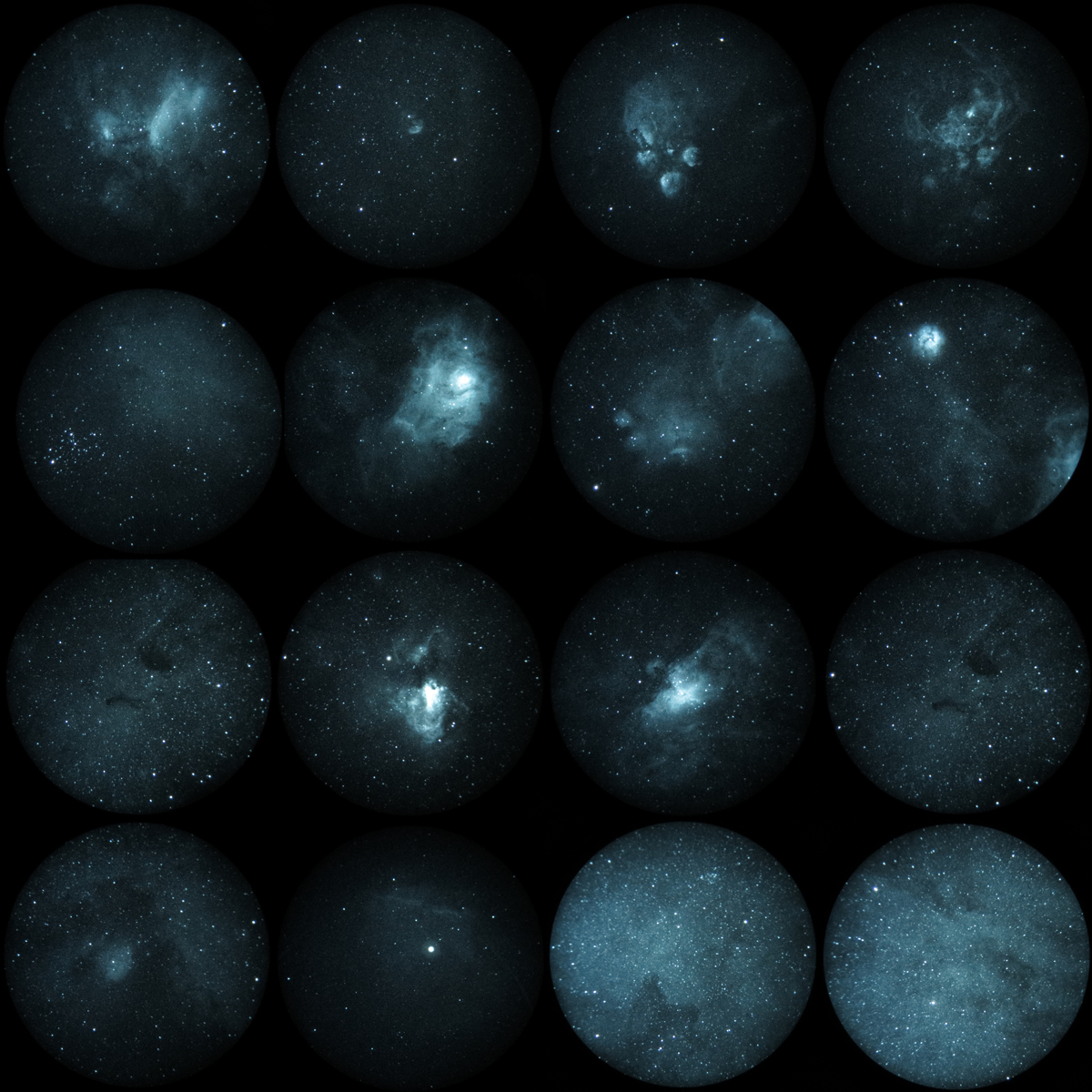 On this first night I managed to stay up until 4am or so to see the bright summer Milky Way rising in the east. Of course, Scorpius foreshadows that as it arcs upward earlier in the southeast, and the difference of latitude was noted due to the angle at which it was rising. I remained coherent enough to get some decent photos with my little Canon G15 through the 12.5" NVT and TNVC-supplied supergain tube in Mod3c housing that attaches directly to the filter wheel assembly on the telescope. The results did not disappoint, and I'm including all of the photos above without description because you can figure most of them out. A few are just starfields or little nebula wisps that I found photogenic or curious. If you want to identify them all, knock yourself out! That should keep you busy for a while, I don't have time. Well, at 4am it was definitely time for bed for me, but other observers were still going. I slept in and acclimated somewhat to the new astronomy schedule, and had a delicious breakfast. The food was great, and I tried not to overeat too much and start gaining weight. Breakfast time was decided to be around 10:00 or 10:30am, as I recall, giving everyone a chance to sleep in. Lunch was a bit later if you needed it, but I think we mostly skipped it, and dinner was around 7pm. Below are a few food photos just to make you hungry - breakfast, dinner, and desserts. We were allowed to raid the fridge for dessert if we didn't disturb the kitchen, thankfully.  After a great breakfast, which varied from day to day, a client and I went for a hike up the mesa to the north. It was challenging going up the slope and rocks while avoiding cacti and other bushes and plants with thorns and spikes on them, but we finally made it up to a nice spot to enjoy the panoramic view of the valley. Here are some photos of us and a panorama of the view from my phone. The terrain is a lot like Okie-Tex, but with some creeks and rivers flowing through. 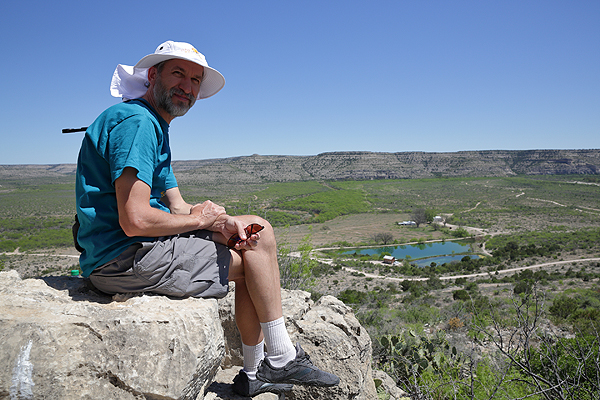 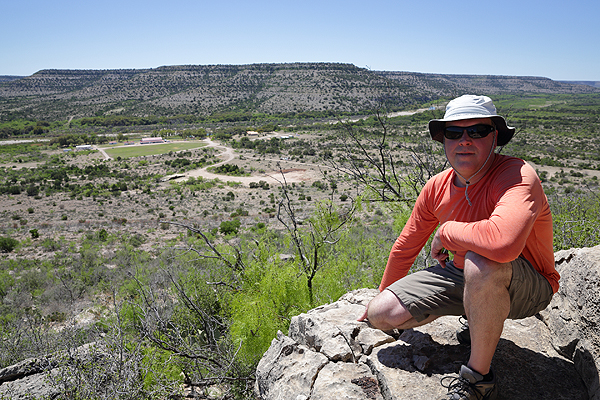  The climb was a good workout and filled some of the time between breakfast and our late dinner. There were a lot of nice flowers blooming, such as the one below, and then I dangled my feet into the very cold pool to soothe them and cool them off after a nice hike and climb in my hiking shoes. No doubt later in the year this would have been a refreshing place to take a dip.  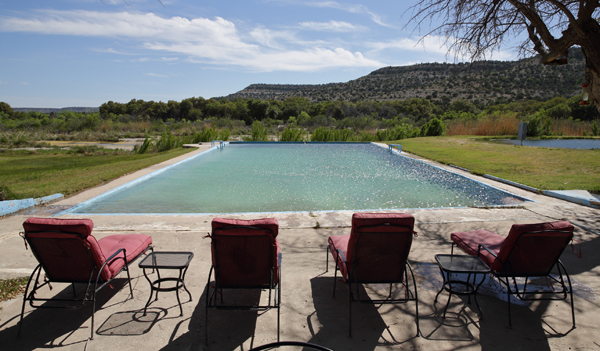 On other days, we went for a walk to get some exercise and see the local area, such as the river that flowed by the buildings. 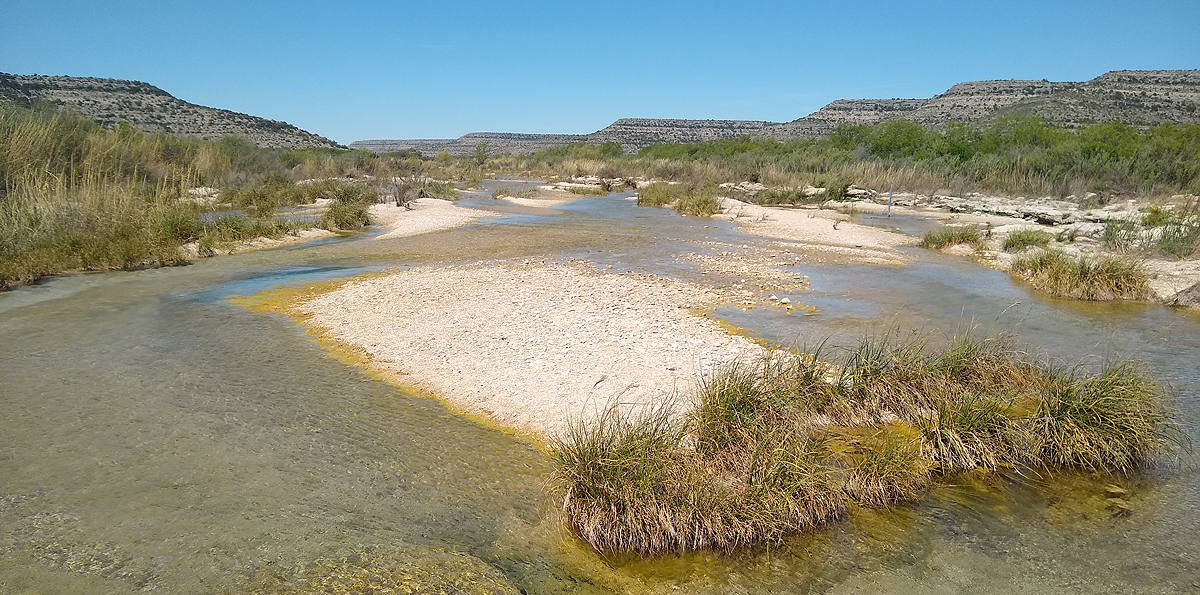 Here's our group photo from earlier in the week, from left to right we see Bhavesh, Ed, Dave, me, Dumitru, and Rick. The photo is missing Steve, whose telescope is shown at right. Steve built his 22" f/3.3 telescope, and also Bhavesh's 24" f/2.75, from metal, and added the drive systems. Both are excellent structures. Dumitru built his own lightweight 20" f/3, which is seen just to the right of my 12.5" f/2 - both in front of the red and white building. 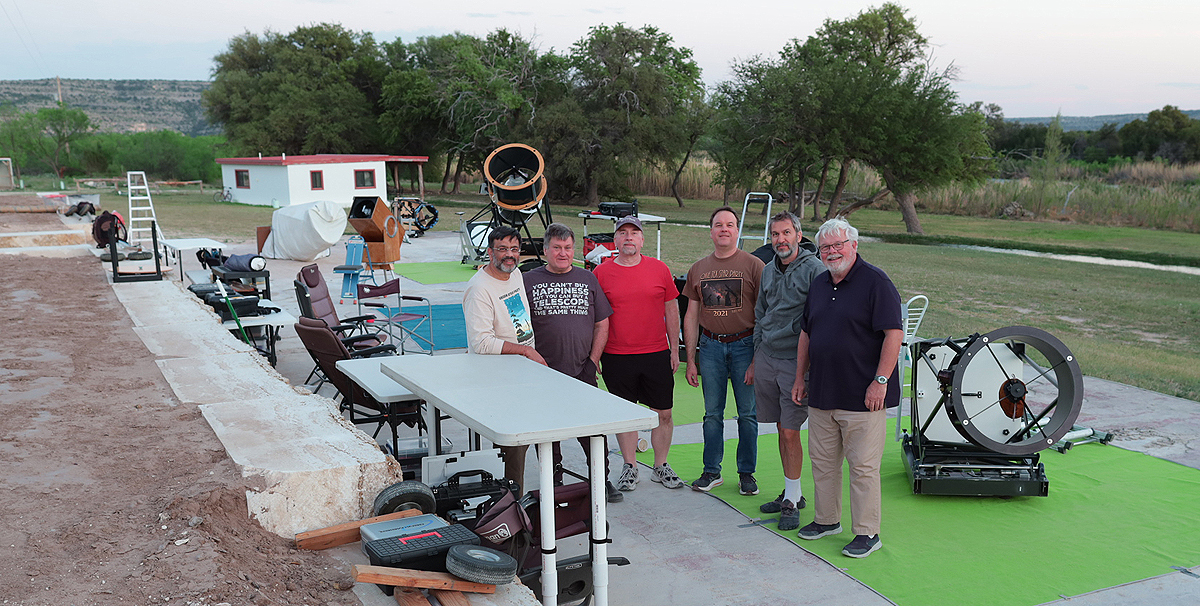 On the second night I decided to work on photographing galaxies and other objects with the 12.5" F/2 NVT, and experimenting with filters. As told to me by a European client, the Astronomik L-1 IR-blocking filter does indeed help filter out background skyglow for nightvision and improves contrast for galaxies greatly. However, first it was time to observe the comet in the darkening western sky and probably cluster somewhere in the winter Milky Way. 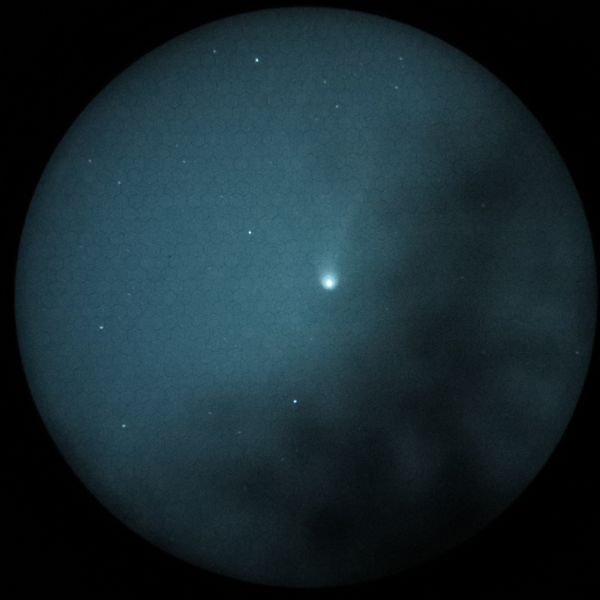 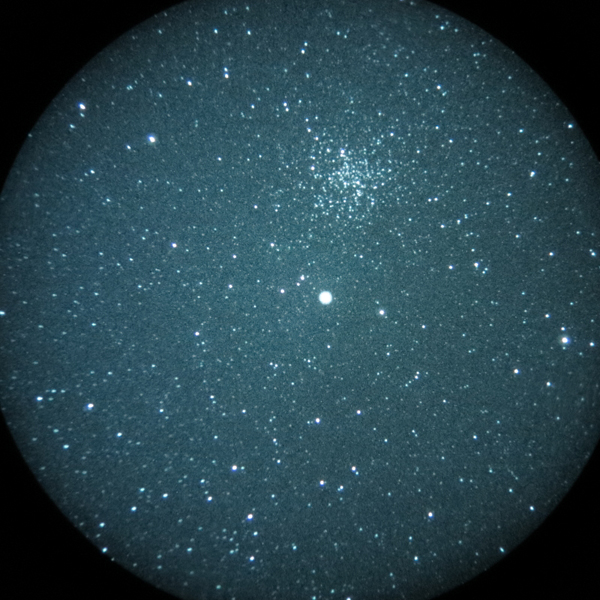 The next stop was the Vela SNR, using my 2X lens (a 50mm f/1.4 Kowa C-mount lens) and the Mod3c supergain from TNVC, with an H-alpha filter held in front of the lens using a Delrin adapter that I made on my lathe to hold filters. Results were pretty good, so here is a mosaic of different portions of that huge complex of nebulae. 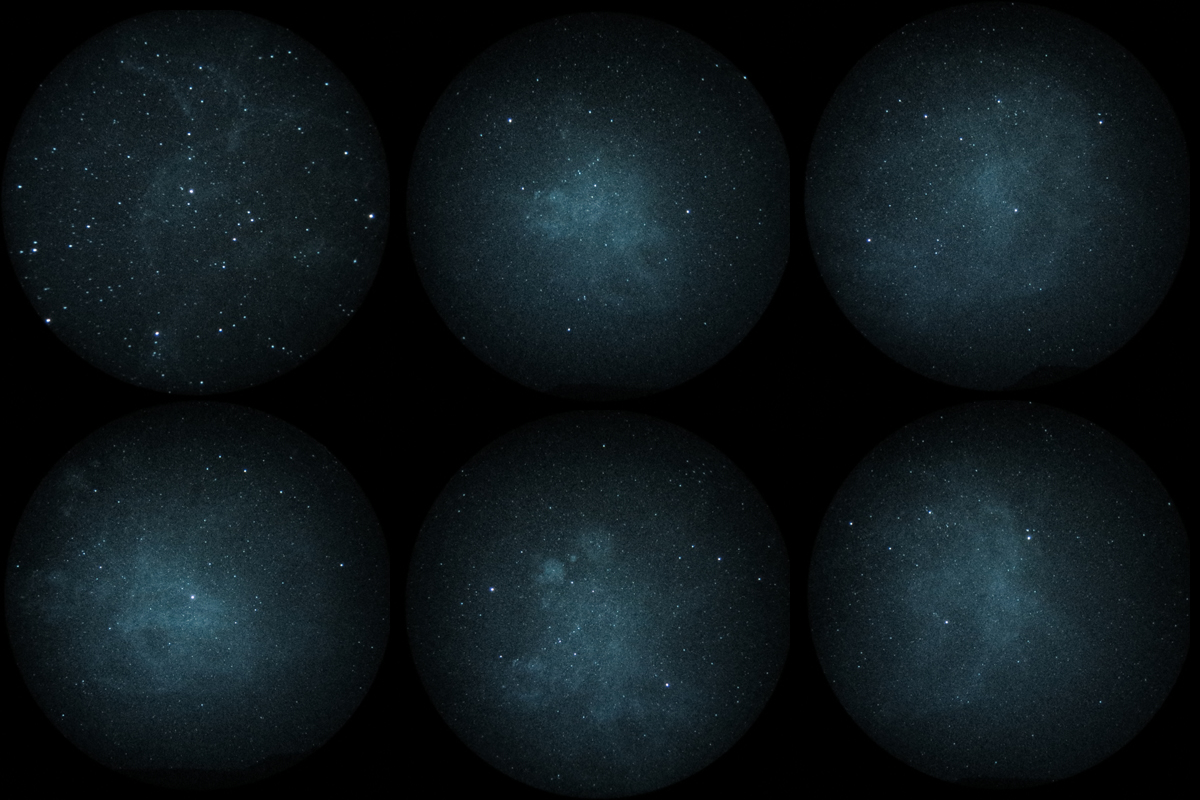 It's possible that the first image is from central Auriga, but again, identify stuff to your heart's content! Next, I worked on photos of various galaxies and groups of galaxies, using the Astronomik L-1 IR blocking filter to darken the background nicely and enhance contrast. Some nice examples are below. Keep in mind that for most of the NV images, including all shown up to this point, the visual view is better because the camera does not focus perfectly. I had to shrink them to make the mosaic work, but I cropped the image of the Antennae galaxies so it was not shrunk as much and the detail would still be visible. 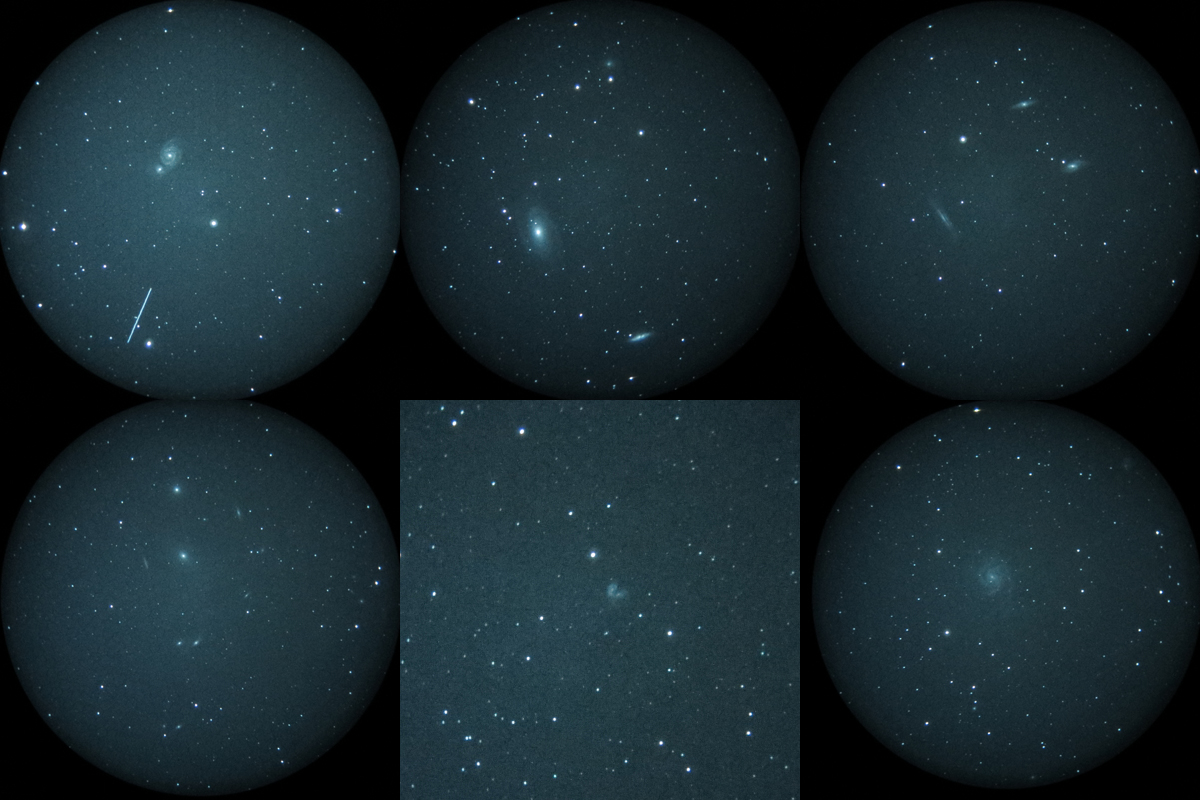 Detail is still limited by the nightvision device, but some excellent detail can be seen. This makes me want to build the 24" f/2 NVT so I can have twice the magnification! (Yes it would collect four times as much light, but because the magnification is twice as high and thus the area was four times larger, the brightness will be the same.) The nights went by, as I recall the next few were hit and miss, with good nights and one cloudy night, still not bad for April in the lower 48. Telescope discussions were plentiful during the day as Ed caught everyone up on Elvira's latest improvements and other things he was working on. We discussed telescopes in general, and one client was working on a binoscope design that was evolving by the day. It was a fun environment to hang out in and spitball ideas. And then, suddenly, it was the evening before the eclipse. I don't recall if I observed or not, but I had a tasty beverage and somehow managed to go to sleep for several hours fairly restfully. Cross your fingers and say a prayer We got up early, anticipating traffic along our route. Vehicles were further loaded, supplies were double checked, and we departed out the long gravel road to the main road. There was no traffic. There were pedestrians, however, of the very stupid four-legged variety. Ed had wisely brought some radios anticipating (correctly) complete lack of cellular coverage, so periodically and frequently the lead vehicle would hit the transmit button and say "Deer on the right side", or "Deer on the left side", or possibly even "F&#%ing deer everywhere!". Well I made the last one up, but you get the idea. I've never seen a stretch of road with so many deer. We had been warned to go no faster than 45 mph until we got to the road by the Mexican border, and that was good advice. We all made it through the gauntlet without any physical interactions with animals, except for some very inconvenienced large bugs on the windshield. As we headed east, dawn broke, and we saw a clear sky, but off in the distance the enemy loomed, growing larger with each mile - structureless clouds streaming northeast out of Mexico. Moisture was streaming northeastward into eastern Texas. 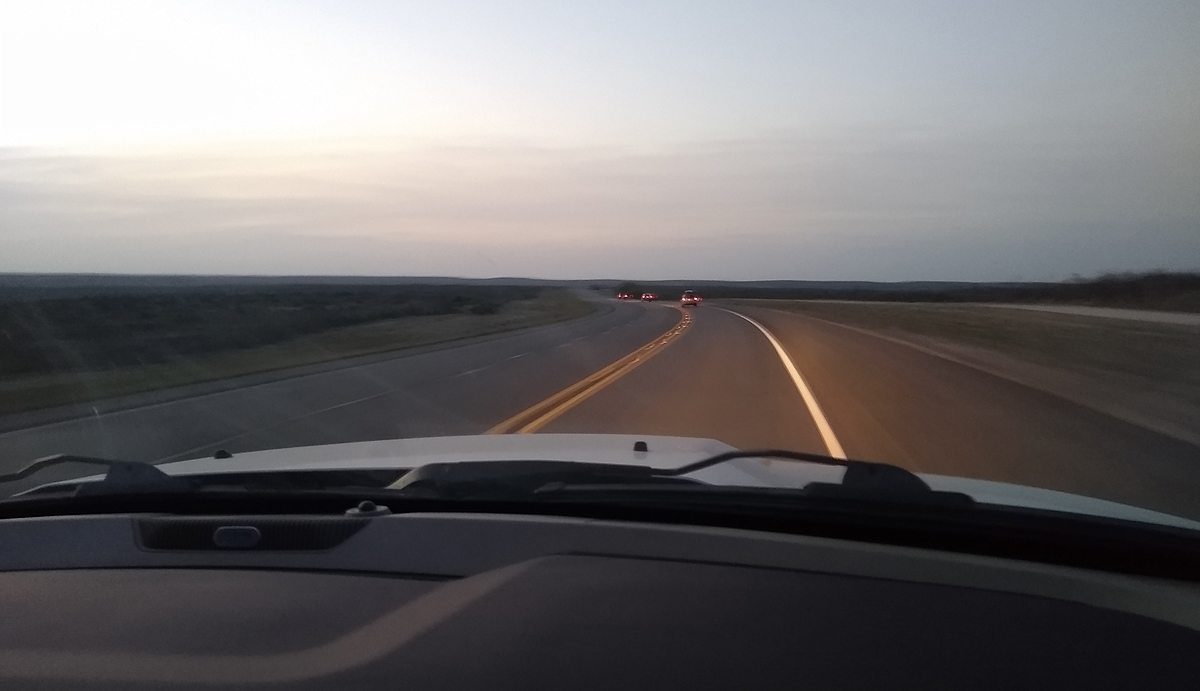 After hours of driving we ended up in Del Rio, TX, under cloudcover. Some serious discussion ensued in the parking lot of a gas station. Forecast models showed clearing the farther west we went, but that was farther from the center line of the eclipse. The center line looked quite bad in any reasonable locations that we could reach on it, so Ed and I came to the realization that the best bet was to go back west and give up duration in favor of more chance of clear skies and easy escape if traffic got heavy. We ended up doing that, and found a great place to set up in a picnic area in the Amistad Recreation Area. It was just off the main road, and after a bit of GPS-fueld confusion about how to get to it, we claimed a covered picnic table. There was a restroom right there, as well. We settled down to wait. That was difficult for some, who would have rather been driving somewhere, but we just didn't know where, so the best choice was to play the odds and trust the forecast cloudcover model. We crossed our fingers, maybe said a prayer or two, and waited. We were only a few miles from the Mexican border, and border patrol passed by periodically through the picnic area next to a large reservoir. More people showed up, but there was plenty of room for parking. It was drizzling occasionally, and this was not helping our stress levels. It was odd to be in southwest Texas while the air was humid and laden with moisture. It gives the dry scrub land a particular smell, the unique smell of rain in the desert. 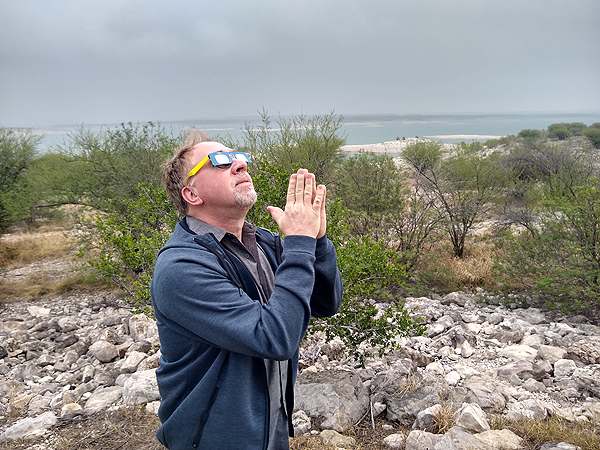 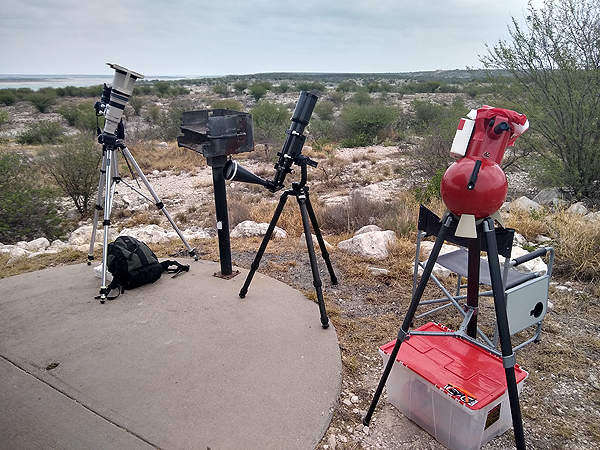 A bit before the start of the eclipse the clouds began to show considerable breaks, and equipment was set up, see above and below. At least two of us were shooting photos with telephoto lenses, and there was one sun funnel that projected the image of the sun on a circular piece of rear projection fabric (black telescope in center of above photo). 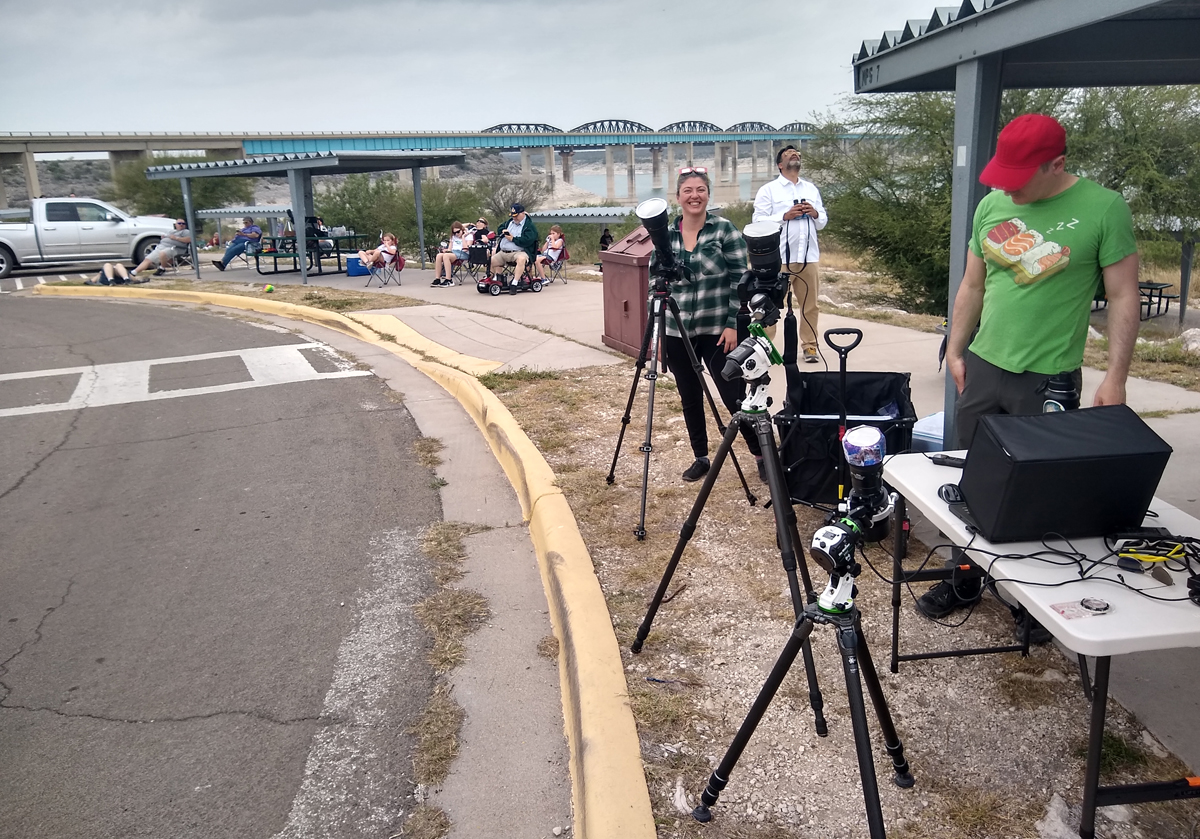 Moods improved as the skies brightened further, and the likelihood of seeing the eclipse improved. First contact was seen through clouds, but there it was. We hoped that the reduction in solar radiation might also help reduce the clouds. Soon the sun appeared through more breaks in the cloud, and it was enough to center cameras on it, achieve focus, and start shooting some photos! We were increasingly happy despite not enough sleep. Final preparations were made, cameras were readied, bathroom breaks taken, and we were in the home stretch counting down the minutes to totality. As the sun went to a sliver, I took off my eclipse glasses, put on my eyeglasses for best possible vision, and pulled the camera filter. 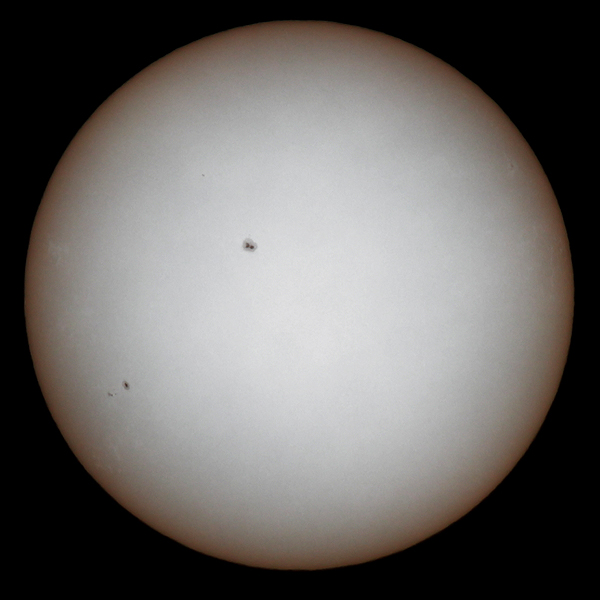 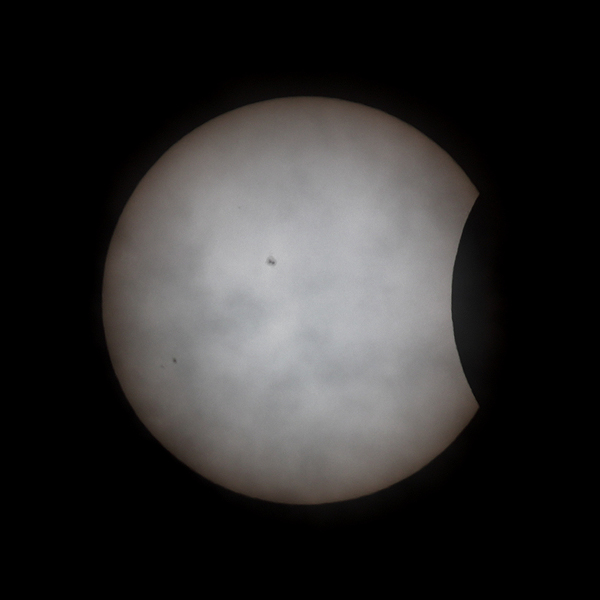 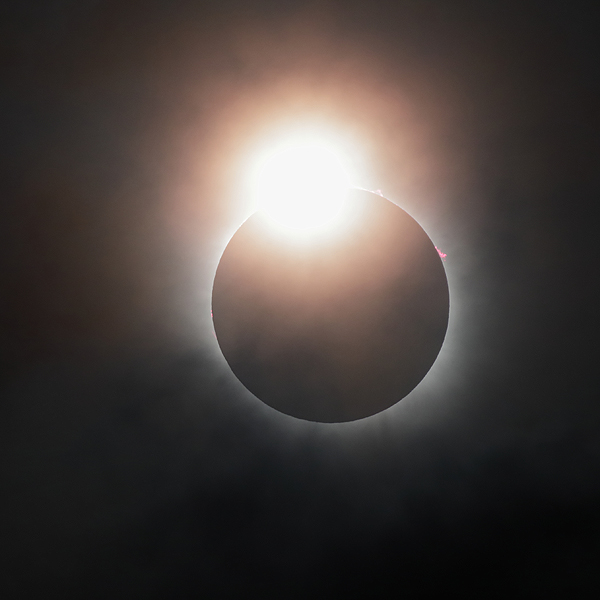 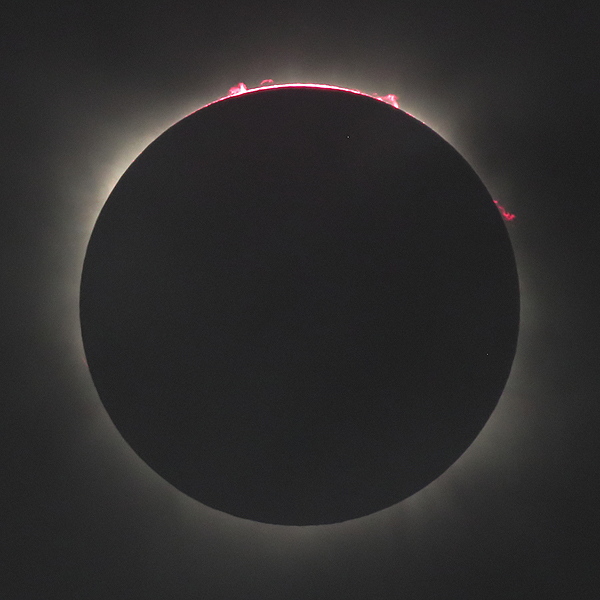 It came quickly and soon the sun went out, to the cheers of everyone in this little recreation area rest area. Someone yelled for people to take their eclipse glasses off, and then I tried to just ignore everything and look and shoot photos. I snapped away with my camera while looking up at the spectacle above, a total eclipse through broken clouds that made for very interesting photos. I could easily see the prominences with no magnification with my eyeglasses, which I only wear rarely because my vision is usually good enough without them. I pretty much only use them when looking for faint stars under superb skies or at eclipses. It was a beautiful view of the deep red fingers sticking out of of the sun and the dark outline of the moon. Shots of the corona were not really doable due to the scattered clouds, but the eclipse was fully visible through clear spots and through the thin clouds that continued to erode as the minutes ticked by. Here is my favorite shot taken with my wider angle lens and other camera, an eclipsed sun through clouds with Venus visible. It shows the broken clouds. And then, in a few seconds, it was over, and the light of the sun swept back over us, noticeably brighter than before totality started. We smiled and cheered, as did the rest of the gathered crowd. Despite our nicely elevated position, I could not see the eclipse shadow receding to the northeast, likely due to the clouds that had partially obscured it. As I recall, we were all just happy to have seen the eclipse, and the clouds, while not ideal, made for interesting viewing and unique photos. As you can see above, the eclipse is still visible through the scattered light clouds. If we had gone further southeast, I don't think we would have seen it at all. With adrenalin still pumping, we celebrated on a now partly sunny early afternoon, and some posed for photos with the sun funnel still nicely displaying an image of the partly eclipsed sun on its screen. Bhavesh and Rick are first.  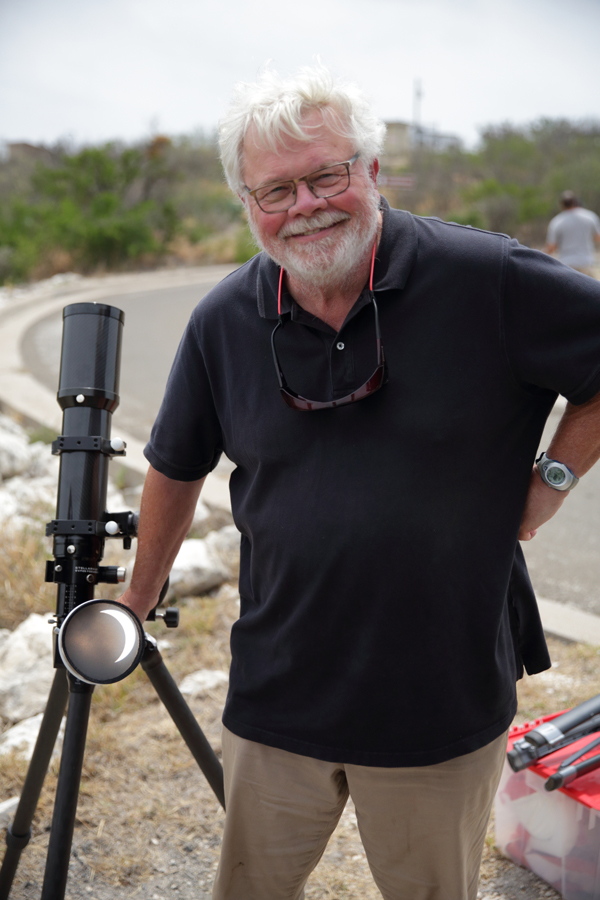 And two more - Dumitru and Dave. 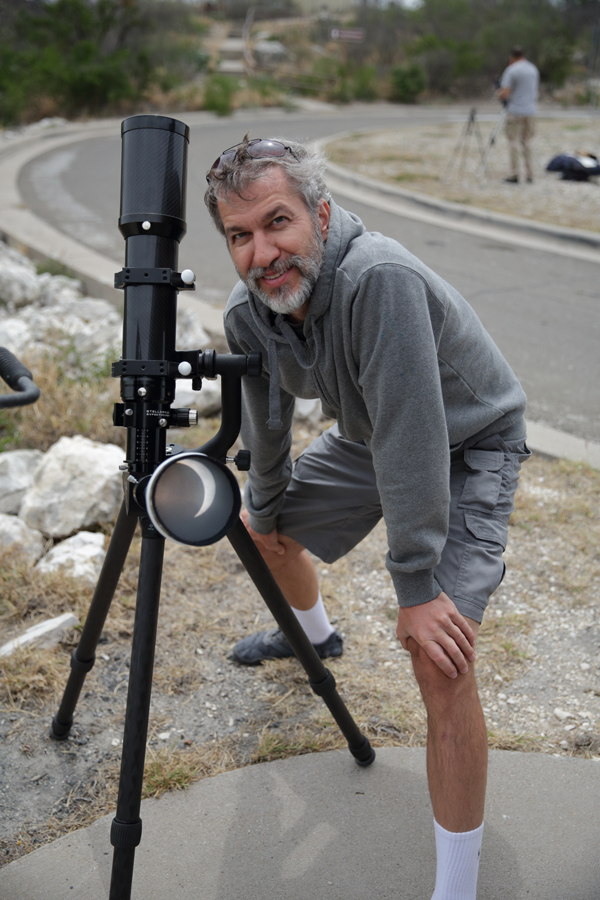 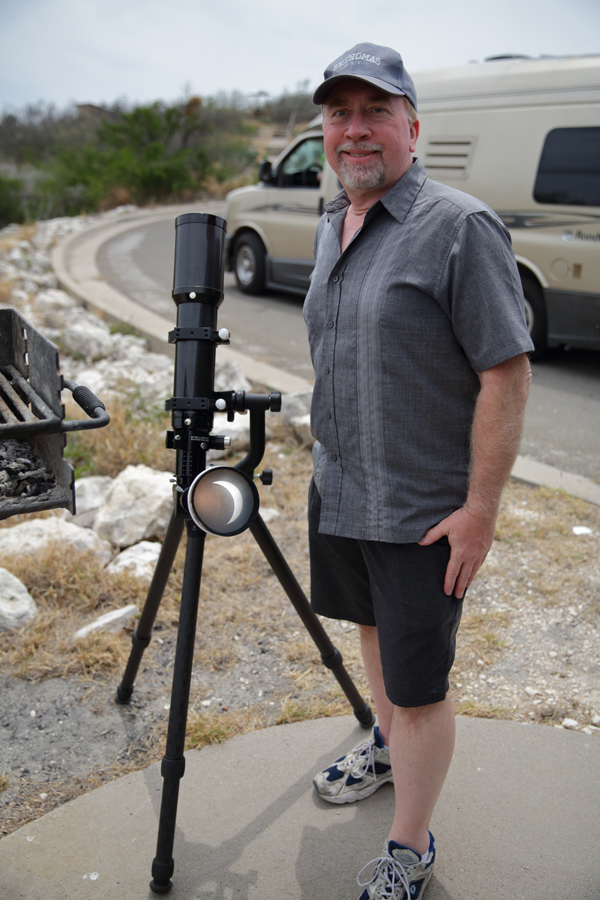 Then it was time to eat lunch! The sun emerged more and more and the temperature rose as we sat down at the picnic table in the shade. The cook had prepared a cooler full of sandwiches for us, and we broke them out and enjoyed the camaraderie of fellow astronomers as we discussed excitedly what we had just seen. I had only one other eclipse experience to compare with, see my Eclipse 2017 page, but others had witnessed many more. 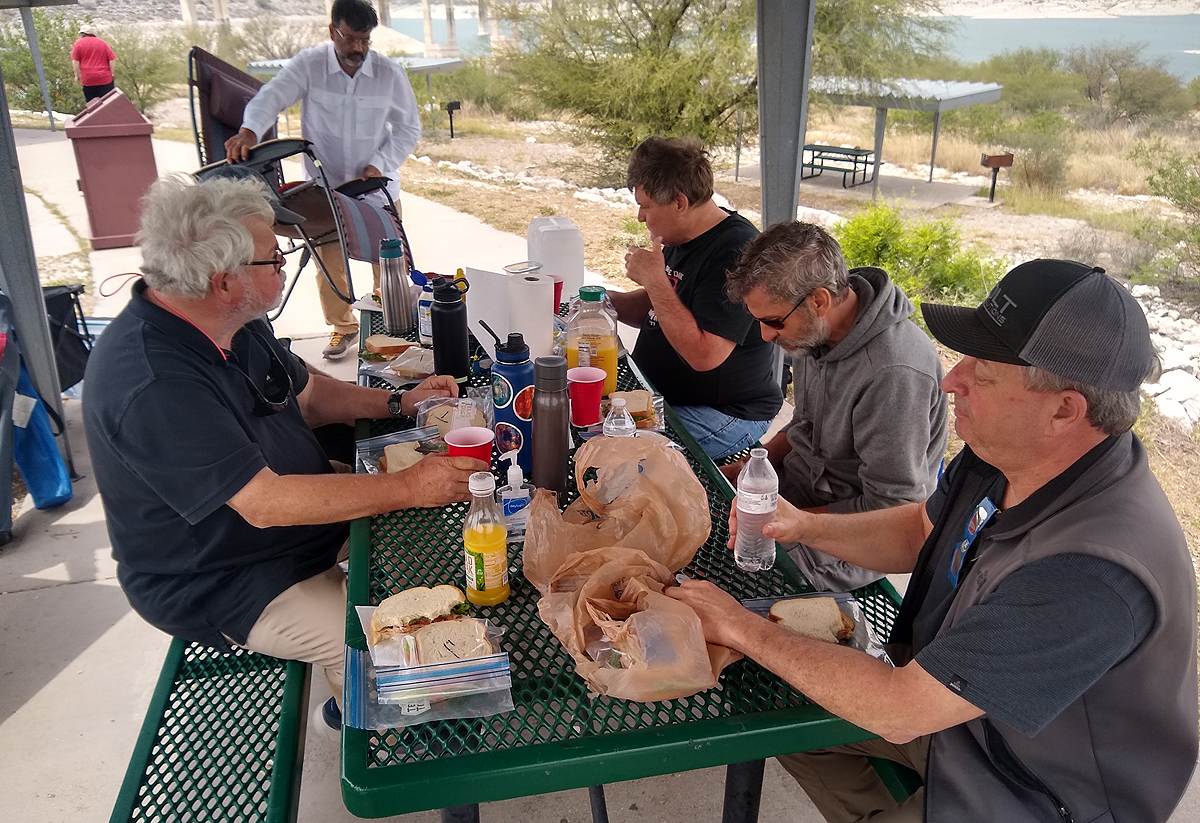 We departed separately, with one group heading to Del Rio's stores for supplies, and others heading back to the ranch. I ended up driving Ed's truck all the way back to the ranch so he could sleep a bit. I was too wired to sleep, and the only traffic we hit was at a very backed-up border inspection station where they make sure no illegals are hiding in your car or truck. I believe people napped after returning, and I don't recall if there was observing that night, but I think Ed and I may have sampled some good beers before crashing and catching up on sleep. With the eclipse expedition a success, we were relieved, things were more relaxed, and we observed as much as we cared to and enjoyed the food, company, and location. 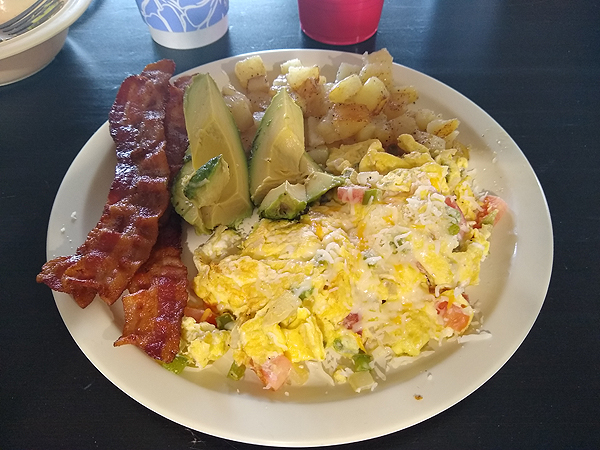 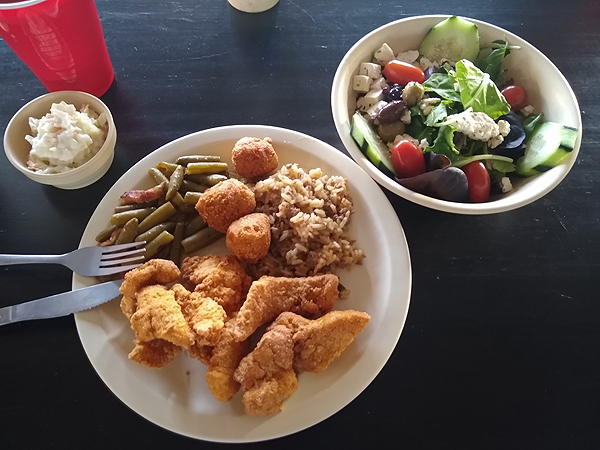 Here's a group meal photo, and some rather strange, brightly colored jars of stuff, I wonder what it could be? 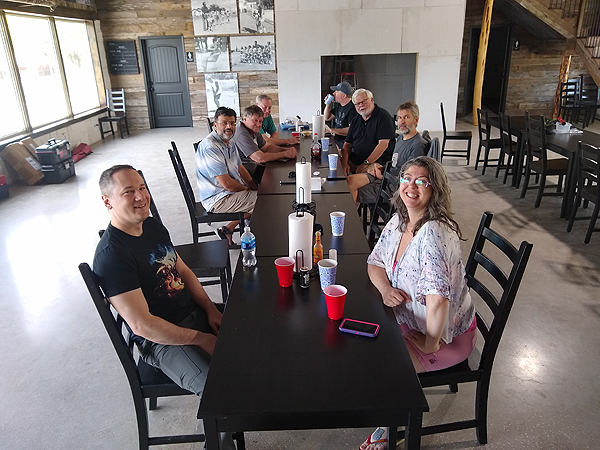 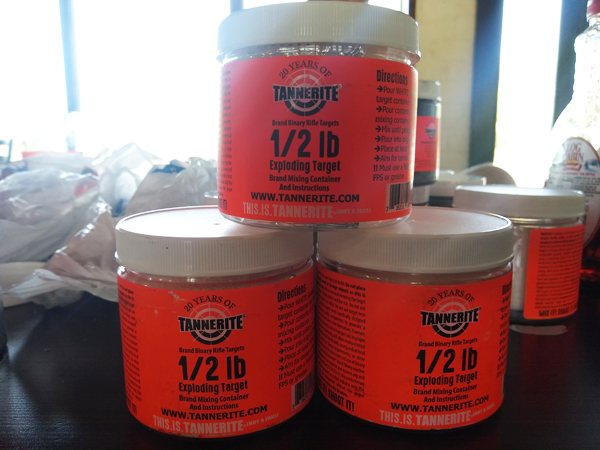 There were some other activities available for our group, the first being enjoying a very sunny few hours on the shooting range. For those that don't know, when you hit the jars of Tannerite with a bullet, it explodes, resulting in a nice reward for a good shot! It's highly recommended. We were able to shoot several handguns and rifles, all a bit different, and for those who had not shot before it was a great introduction to shooting ranging in calibers from 22 to 45. I've done a good amount of shooting, so I enjoyed trying out different firearms that I had not fired before. 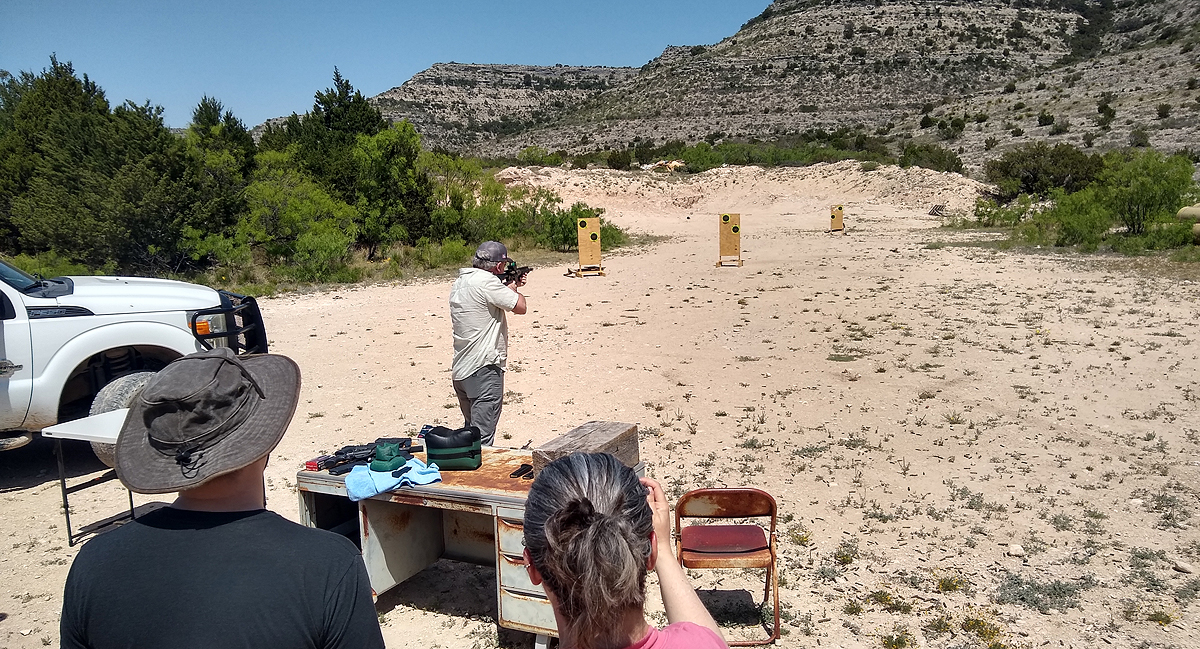 Our other activity was some kayaking. It started off slow with a wide, lazy river, and ended in some fun, fast moving, narrow, shallow streams that were a challenge to navigate. Here's the group at the pull-out point.  I did a bit of HDR photography around the property in some hazy evening sunshine that made for nice photos. These were from sunset on Saturday. 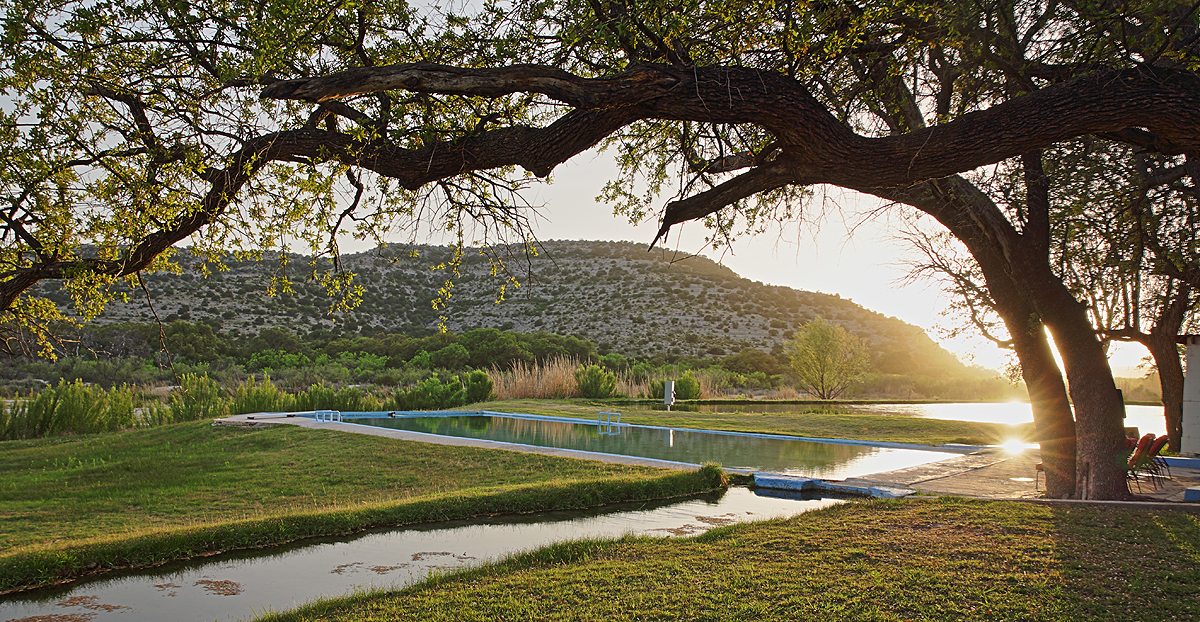 This is a shot of the pond, note the dead tree at right, you will see that in the final image in this article. The creek is seen beyond the pond. 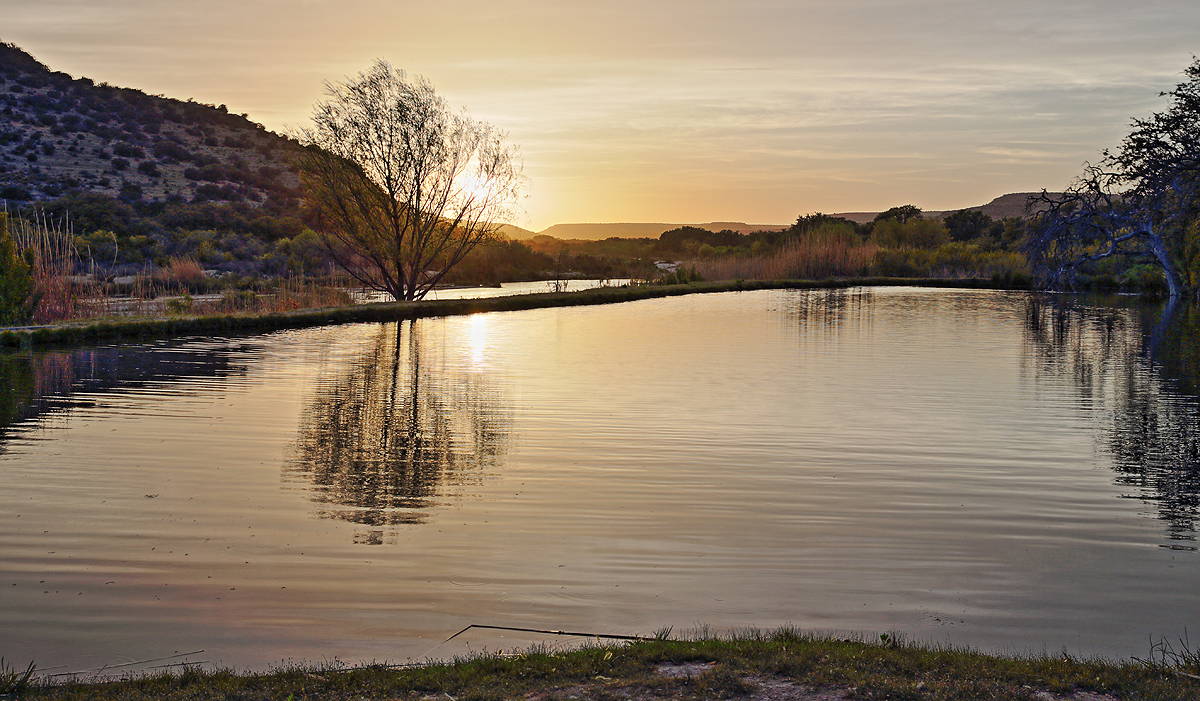 Soon it was time to leave, and I packed up the car mostly the night before and enjoyed views through others' telescopes the final night. Some were still busily working on their observing lists, and I admired their dedication. I saved this image for last - the Milky Way rising in the east above the pond, with some stars reflecting off of the still water. I scared some deer that liked to hang out near the creek and pond as I walked down toting my tracking platform to capture some images. Some red and green skyglow and slight haze make for an interesting image, with that great dead tree in the foreground.  Thanks to Bhavesh for his organizational efforts and getting this gathering together, and to Ed, Dave, Dumitru, Rick, Steve, Shawn and his wife for sharing views, good talks, and for coming such a long way to share the eclipse. It was a pleasure to meet everyone and share time and the sky. After a fantastic trip, it was a two-day drive home, which I broke up into two and a half days. I again stopped in Oklahoma City, and then in St. Louis to visit some friends. My friends in Illiniois, family in Ohio, and girlfriend viewing in Arkansas all saw the eclipse, probably with better clarity than I did, but I still was able to see it and enjoy a star party with new friends as a bonus. I got back to work promptly to finish some mirrors and projects, and I can't wait for some more dark skies at Okie-Tex and on some travels before. |
Until next time, clear, dark skies, good seeing, and cheers. Hoping I can make the 2028 solar eclipse in Australia! -Mike Lockwood, Lockwood Custom Optics |